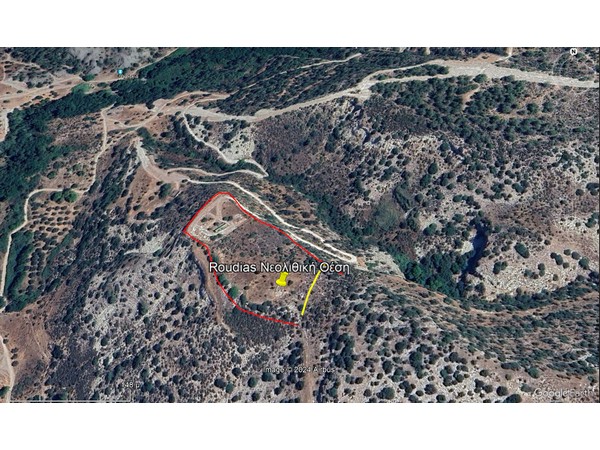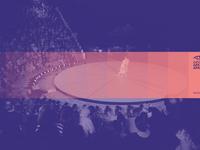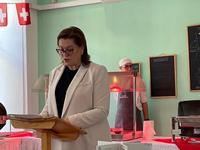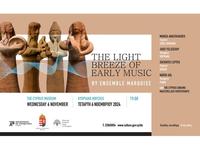Press Releases

19-07-2024 14:54
The archaeological mission of the Aristotle University in Cyprus – at Agios Ioannis/Vretsia-Roudias 2024
The Department of Antiquities, Deputy Ministry of Culture, announces that in April 2024 the “Archaeological Mission to Cyprus” of the Department of History and Archaeology of the Aristotle University of Thessaloniki (AUTH) carried out excavations and research at the site of Agios Ioannis/Vretsia-Roudias, under the direction of Professor Emeritus N. Efstratiou and Assistant Professor M. Ntinou with the financial support of AUTH.
The research campaign was carried out between April 8 and 20, 2024, in collaboration with the permanent partner of the project Demetris Kyriakou. The AUTH research team included Professor Giorgos Syridis, Geology Department, and the students Ioanna-Ermioni Papaioannou, Athena Tetou, Sofia Firtikiadou and Andreas Samouris. (Fig. 1). The 2024 research focused on the Epipaleolithic site (Lower Agios Ioannis/Vretsia-Roudias), identified in the western part of the Roudias terrace, as well as the Aceramic Neolithic site (Upper Agios Ioannis/Vretsia-Roudias), which is located on the terrace’s eastern part.
In the Epipaleolithic site, the excavation of trenches I12, J12 continued. The team’s main objectives here were to study the site’s stratigraphic sequence, to collect all artefacts and zooarchaeological remains, as well as to the systematically conduct water flotation of collected sediment samples, aiming towards the recovery of archaeobotanical remains. In parallel, the stone structure that had been revealed during previous excavation campaigns in Lower Roudias was carefully cleaned and recorded.
In Upper Roudias, cleaning was carried out within the fenced area where the circular building of the Aceramic Neolithic period and the adjacent stone structures are located (Fig. 2). At the same time, the stone buildings located in the area to the northeast of the monumental circular building were also cleared from vegetation and recorded. The team’s aim was to obtain a complete picture of the presence of visible stone structures on the terrace which appears to have been used diachronically.
The works conducted throughout the terrace were completed with the topographical documentation, aerial photography, orthophotography and digital mapping of the site by topographer Mr Filippos Stefanou (Fig. 3-5). Moreover, a geophysical survey of the entire archaeological site was carried out by the research team of Professor Emeritus G. Tsokas from the Department of Geophysics of the Department of Geology, AUTH. The aim of the research was to identify possible buried architectural remains, structures and other features in the vicinity of the circular building of the Aceramic Neolithic period in Upper Agios Ioannis/Vretsia-Roudias and in relation to the stone structure in Lower Agios Ioannis/Vretsia-Roudias.
The geological reconnaissance indicates that the geological strata present in the wider area are well stratified thin layered white-yellowish marls and chalks with thin intercalations of cherts. They belong to the Lefkara Formation and in the study area, they are faulted by an N to S trending normal fault (Fig. 6). The western fault-block subsided, while the eastern block raised and on the surface of the western block a tectonic terrace was created which was gradually covered by the eroded debris from the raised fault block of Lefkara rocks. As a result, a thick mass of mixed angular fragments of various sizes are deposited on the terrace and compose the geological basement of the site. These mases are covered by a thin soil.
In conclusion, the campaign at Ag. Ioannis/Vretsia-Roudiasin April 2024 performed the following work: recorded all buildings, features and excavation sections that have been uncovered and investigated to date using digital media in order to obtain a complete and accurate record; continued the excavation of the deepest layers of the Epipaleolithic site in order to provide stratigraphic correlations with the lithics and zooarchaeological material under study; and finally, used geophysical methods sought to investigate any invisible subsurface structures.
Fig. 1 Members of the research team at the Epipalaeolithic site (Lower) Ag. Ioannis/Vretsia-Roudias

Fig. 2: The Aceramic Neolithic site of Upper Agios Ioannis/Vretsia-Roudias. Team members cleaning the site

Fig. 3: Aerial photograph of the Aceramic Neolithic circular building, Upper Agios Ioannis/Vretsia-Roudias (F. Stefanou)

Fig. 4: Orthophoto of the Aceramic Neolithic circular building, Upper Agios Ioannis/Vretsia-Roudias (F. Stefanou)

Fig. 5: Orthophoto of the stone structure and the excavation trenches, Lower Agios Ioannis/Vretsia-Roudias (F. Stefanou)

Fig. 6: Satellite image (GoogleEarth) of the prehistoric site, red colour line depicts the steep cliffs surrounding the site, while yellow line depicts the possible path of the fault zone (G. Syridis)

(IA/GS)
Relevant Press Releases


04-11-2024 13:18
Announcement by the Cyprus Academy of Sciences, Letters, and Arts





